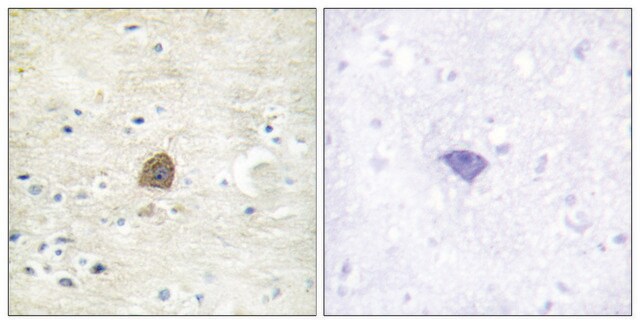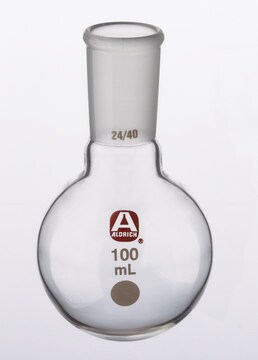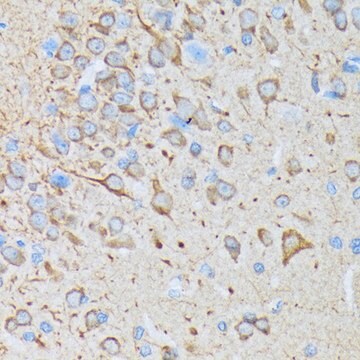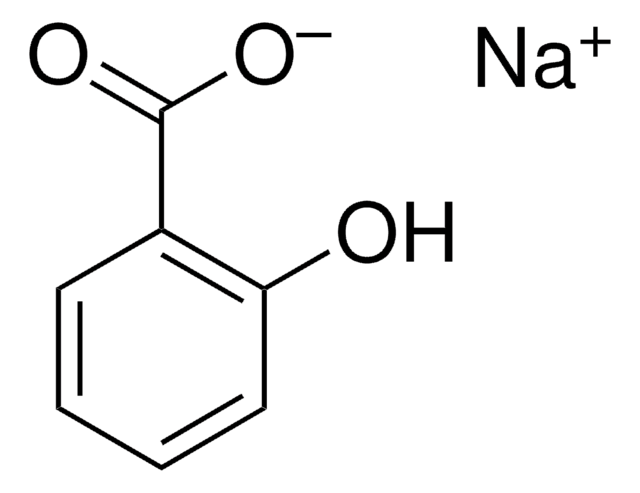ABS2107M
Anti-phospho-CaMKII beta (Ser331)
from rabbit, purified by affinity chromatography
Sinónimos:
Calcium/calmodulin-dependent protein kinase type II subunit beta, EC: 2.7.11.17, CaM kinase II subunit beta, CaMK-II beta
About This Item
Productos recomendados
biological source
rabbit
Quality Level
antibody form
affinity isolated antibody
antibody product type
primary antibodies
clone
polyclonal
purified by
affinity chromatography
species reactivity
rat
species reactivity (predicted by homology)
human (based on 100% sequence homology)
packaging
antibody small pack of 25 μL
technique(s)
immunocytochemistry: suitable
western blot: suitable
isotype
IgG
NCBI accession no.
UniProt accession no.
target post-translational modification
phosphorylation (pSer331)
Gene Information
rat ... Camk2B(24245)
General description
Specificity
Immunogen
Application
Immunocytochemistry Analysis: A representative lot detected phospho-CaMKII beta (Ser331) in dissociated hippocampal neurons (Kim, K., et. al. (2015). Neuron. 87(4):813-26).
Quality
Western Blotting Analysis: A 1:500 dilution of this antibody detected phospho-CaMKII beta (Ser331) in HEK293T cells transfected with CaMKII WT, but not the mutant S331A.
Target description
Other Notes
¿No encuentra el producto adecuado?
Pruebe nuestro Herramienta de selección de productos.
Storage Class
12 - Non Combustible Liquids
wgk_germany
WGK 1
flash_point_f
Not applicable
flash_point_c
Not applicable
Certificados de análisis (COA)
Busque Certificados de análisis (COA) introduciendo el número de lote del producto. Los números de lote se encuentran en la etiqueta del producto después de las palabras «Lot» o «Batch»
¿Ya tiene este producto?
Encuentre la documentación para los productos que ha comprado recientemente en la Biblioteca de documentos.
Nuestro equipo de científicos tiene experiencia en todas las áreas de investigación: Ciencias de la vida, Ciencia de los materiales, Síntesis química, Cromatografía, Analítica y muchas otras.
Póngase en contacto con el Servicio técnico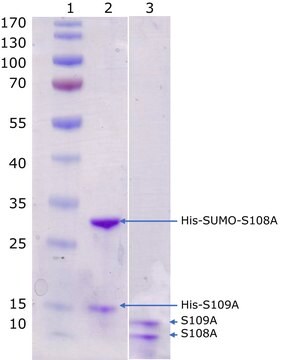
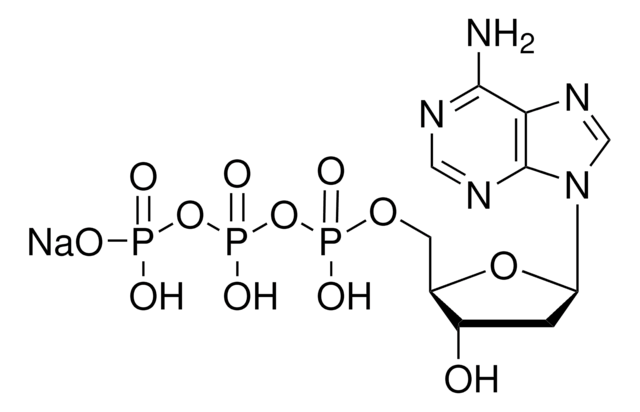
![3-[(Trimethylsilyl)ethynyl]pyridine 97%](/deepweb/assets/sigmaaldrich/product/structures/343/531/3049f5ac-7c3c-45ca-b43c-809abc2f3c9d/640/3049f5ac-7c3c-45ca-b43c-809abc2f3c9d.png)


